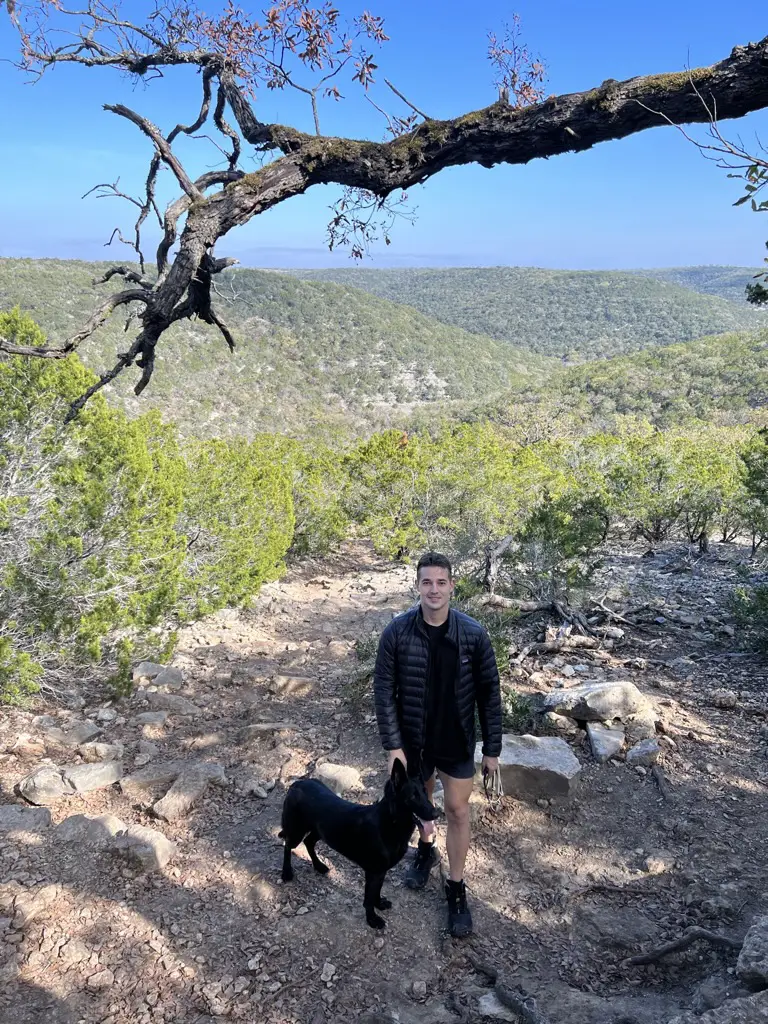We strive to provide you with authoritative, trustworthy, and expert advice. In doing so, the staff at texaswalkabout.com performs extensive research, editing, and fact checking to every post on this webiste. If you feel that this article can improve, please feel free to reach us at staff@texaswalkabout.com
Whether you’re a local or tourist, some of the best destinations in Texas are its national parks. They cover a wide range of interests, from fishing and aquatic sports to hiking and camping.
Besides that, the parks offer more than nature walks and boat trips.
You can go back hundreds, even millions of years to explore the state and land’s rich history through monuments and fossils.
The parks also provide a chance to admire the breathtaking scenery and exquisite wildlife through trails. Stick around to learn more about Texas national parks.
Best National Parks in Texas
While Texas boasts multiple national preserves and sites, the state officially has only two national parks. They’re the Guadalupe Mountains and Big Bend National Parks.
Nonetheless, the state still offers national park properties, including historical sites, monuments, and recreational areas.
Guadalupe Mountains National Park
Guadalupe Mountains National Park is ideal for hiking buffs. It’s home to the highest peak in the Lone Star state, reaching up to 8,750 feet.
You can reach the top from a 4.2-mile hike starting at Pine Springs.
As you venture into the mountainous region, look around you at the vast desert scenery covered in valleys and mountains. Take your time wandering through the dunes and canyons.
Don’t forget to look up at the night sky riddled with stars. You can explore multiple other hikes. The national park has over 80 miles worth of land to cover.
In terms of Guadalupe Mountains National Park’s history, the remote desert region was once enveloped in coral reefs over 265 million years ago.
Try to catch a glance at its history by looking for fossilized coral reefs around the park. Now, before you take on this hike, make sure that you have plenty of water, food, and gas.
Big Bend National Park
Another one to check off the list for avid hikers is Big Bend National Park. With over 150 miles of land, a whole mountain range, and multiple driving routes, it’s the perfect day trip destination.
Like Guadalupe National Park, you can also find fossils in the region, particularly of dinosaurs and other preserved stones.
The desert land offers a picturesque scene of the Rio Grande in all its 90-mile curved glory. You can rent a canoe, kayak, or raft as you go over 1,500 feet deep into the canyons.
Besides that, Big Bend is the only national park with a complete mountain range, which is called the Chisos Mountains. It’s prime advanced hiking territory.
For other trails, you can check out Emory Peak and South Rim. As a beginner, you’ll have better chances with trails like the Lost Mine Trail and Windows Trail.
Hiking and water sports aside, camping is also available in the national park. With little light pollution, you can marvel under the night sky at National Dark Sky Park.
Lake Meredith National Recreation Area
The Lake Meredith National Recreation Area offers a change of scenery from high mountain peaks. It’s ideal for water sports enthusiasts looking to explore a lake ecosystem.
You can either rent a boat from the park’s vendor or get a private one. Besides boating, other water activities include wakeboarding and water skiing.
Now, if you’d rather observe the lake’s beauty from dry land, we suggest setting up camp on the shorelines.
The space operates on a first-come first-serve basis, and you can stay for about a couple of weeks at most.
If you’re keen on roaming around the lake, explore the hiking trails in your surroundings. They’ll offer a more gorgeous view of the serene lake.
Alibates Flint Quarries National Monument
As the park’s name suggests, Alibates Flint Quarries National Monument is abundant in the stone, flint.
Over 13,000 years ago, the area was home to weapon-making for wooly mammoth hunters. The indigenous people used Alibates flint to create their tools for fishing and pottery as well.
The preserved space formally opened in 1965. Upon your entering the national monument, we suggest starting at the visitor’s center.
The place offers a collection of resources that can help you learn more about the Alibates Flint Quarries. You can explore the center’s museum exhibits and quarry tours guided by rangers.
The place also showcases a film about the quarries. If you have your little ones with you, we recommend allowing them to participate in the Jr. Ranger Program.
Alternatively, the historic site also has self-guided tours available, such as the Mesquite Trail and Alibates Gardens.
Amistad National Recreation Area
Whether you’re a nature, fishing, history, hiking, or wildlife enthusiast, the Amistad National Recreation Area has an activity for every interest.
The Rio Grande flows in the recreation area, creating ideal opportunities for angler activity. You can fish for catfish, bass, and alligator gar.
You don’t have to stay above water for your boating trip. The Amistad National Recreation Area has scuba diving available, where you can wade underwater through the clear waters.
The area offers a large stretch of trails for hikers and nature lovers. Stay on the lookout for local wildlife.
You’re bound to find a reptile creeping about, a couple of birds perched somewhere, or deer running around.
Now, you might be wondering why it’s called “Amistad.” In Spanish, it translates to “friendship.”
This holds geographical significance since the recreation area is located along the U.S.-Mexico border.
Lyndon B. Johnson National Historical Park
The Lyndon B. Johnson National Historical Park, found in Texas Country Hill, was established in honor of the late 36th president.
It houses Johnson’s ranch and childhood home, where his grandparents initially settled in the 1860s.
The late president and his wife donated the ranch to the National Park Service. Apart from the ranch, they also gave away their family cemetery, among other historical structures.
Other sites include the Air Force One and a Half jet that Johnson flew with during his presidency. There’s also the Texas White House.
In terms of what you can do, the park provides educational programs, events, and guided tours that go through Johnson’s history and legacy.
History aside, the park has a 1.2-mile trail and a swimming pool. On the ranch, you can admire the cattle and bison pastures.
Big Thicket National Preserve
The Big Thicket National Preserve is a must-go if you enjoy being surrounded by plant and animal wildlife.
Protected by the UNESCO, the national preserve is a prime site for researchers studying sustainability and biodiversity.
With over 100,000 acres of land, you can explore several diverse biospheres, like swamps, prairies, and forests.
While on a nature walk, you might stumble upon an endangered animal. That said, the preserve offers hikes for all levels, from as short as 0.3 miles to a long 20-mile trek.
San Antonio Missions National Historical Park
The San Antonio Missions National Historical Park is a must-see site for history buffs. The area covers parts dating back to the Spanish Conquest.
It’s a highly valuable area since it’s listed as a UNESCO World Heritage Site. Missions are centers for indigenous people divided into social, economic, and religious parts.
Some of them included Mission San Juan, Mission San Jose, and Mission Espada.
The historical park dives into how the natives and Spanish conquests interacted and the spread of Catholicism in the region.
Speaking of which, the Mission Concepcion is currently one of the largest unrestored churches in the country.
Overall, the San Antonio Missions Park allows you to go on ranger-led tours and explore educational programs to brush up on your American history knowledge.
Fort Davis National Historic Site
Fort Davis gives you a look back at Texas’ war history.
Placed in front of a stunning backdrop of the Davis Mountains, the fort offered military protection during the Indian wars set between 1854 and 1891.
The site gave protection to freight wagons, emigrants, and mail coaches traveling from the Trans Pecos region on the San Antonio-El Paso Road.
Nowadays, you can go to the visitor’s center, where you can learn more details about the historic fort.
The historical site also has hiking trails, where you can go on self-guided tours. The trails lead to old commissaries and hospitals.
The hospital trail can be difficult for novices since it has little shade. If you’re a beginner, we suggest going through the trail along Sleeping Lion Mountain. It’s short and scenic.
Chamizal National Memorial
The Chamizal National Memorial is a historically significant site. It was established to honor the resolution of the boundary disputes between the U.S. and Mexico.
The issue centered around the 600-acre land called Chamizal. The region gradually gave the U.S. more land due to the direction of the Rio Grande.
After a diplomatic intervention, a treaty was signed in 1963, and the memorial was erected soon after.
In terms of activities, the Chamizal National Memorial has a park area where you can enjoy a picnic. In addition, the site has hiking and biking trails worth exploring.
You can also check out the memorial’s theater and museum, where you can get a closer look at the diplomatic ties that led to the resolution between the U.S. and Mexico.
Waco Mammoth National Monument
The Waco Mammoth National Monument allows you to explore a history beyond conquests and human wars.
Instead, you can focus on animals traced from the Pleistocene era, or the Ice Age. Over ten thousand years ago, mammoths roamed what is now Texas.
You can find preserved fossils of Columbian mammoths as well as other Ice Age animals in the national monument.
Archeologists uncovered the site in 1978. Ever since then, researchers have worked on excavating the Waco region.
The majority of the fossils remain in their bone beds, where they’re available for public viewing and research purposes.
El Camino Real de los Tejas National Historic Trail
The El Camino Real de los Tejas National Historic Trail dissects Texas’ history before being part of U.S. soil. It primarily targets its Mexican background.
Back then, the trail was used to transport missionaries, merchants, and Spanish settlers between the late 1600s and early 1700s.
The trail allowed them to travel from Mexico to East Texas. The U.S. National Park Service established it as a National Historic Trail in 2004.
That said, the trail is now divided into four parts. They are the San Antonio-Goliad Region, East Texas-Caddo Region, South Texas Region, and Brazos Region.
They stretch from the Mexican border to Louisiana. Along the trail, you can visit spots like Fort Boggy State Park and San Pedro Springs Park.
Fun fact: San Pedro Springs Park is the second-oldest park in the country, coming after Yellowstone.
Final Thoughts
You could be going with your friends, family, or solo. Either way, visiting any of the parks will give you memorable moments you can cherish.
It can be the first time you’ve spotted a certain bird species, a time you fell from your kayak, or when you caught your largest bass.
Overall, these parks are the perfect getaway from city life. They provide you with a much-needed reconnection to nature.

Robert is a native Texan writer for TexasWalkabout, passionate about Texas culture and food, wearing cowboy boots daily. He interviews local pitmasters and chefs, tastes and reviews innovative dishes, and explores hidden gems and iconic landmarks. Graduating magna cum laude in Cyber Security from the University of Texas at San Antonio, Robert excels academically and professionally while also being knowledgeable in Texas history and culture. After living in Texas for over 28 years, he provides first-hand and trustworthy information for all your Texas needs!
